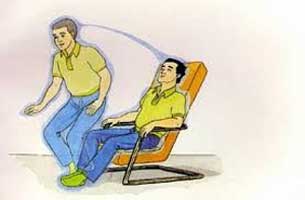- Home
- Editorial
- News
- Practice Guidelines
- Anesthesiology Guidelines
- Cancer Guidelines
- Cardiac Sciences Guidelines
- Critical Care Guidelines
- Dentistry Guidelines
- Dermatology Guidelines
- Diabetes and Endo Guidelines
- Diagnostics Guidelines
- ENT Guidelines
- Featured Practice Guidelines
- Gastroenterology Guidelines
- Geriatrics Guidelines
- Medicine Guidelines
- Nephrology Guidelines
- Neurosciences Guidelines
- Obs and Gynae Guidelines
- Ophthalmology Guidelines
- Orthopaedics Guidelines
- Paediatrics Guidelines
- Psychiatry Guidelines
- Pulmonology Guidelines
- Radiology Guidelines
- Surgery Guidelines
- Urology Guidelines
Intensive blood pressure lowering reduces chances of orthostatic hypotension, finds study

Intensive blood pressure lowering reduces chances of orthostatic hypotension, finds a study.
According to preliminary research presented at the American Heart Association’s Hypertension 2019 Scientific Sessions,adults who received more intensive treatment to lower their blood pressure were less likely to experience drastic blood pressure drops, which can cause dizziness and increase risk of falling.
The study of more than 2,800 adults, average age 63 with a recent stroke, found that a lower systolic blood pressure goal was associated with a lower risk of sudden drops in blood pressure when changing position from sitting to standing — a condition known as orthostatic hypotension (OH). Systolic blood pressure is the top number in a blood pressure reading and a marker of the force of blood flow against the arteries when the heart contracts.
The study highlights are-
- Intensive blood pressure-lowering therapy reduced episodes of low blood pressure while standing, which may cause dizziness and increased risk of falling.
- Findings support value and safety achieving lower blood pressure in adults as way to mitigate cardiovascular risk.
Optimal blood pressure helps reduce the risk for heart attacks and strokes, however, aggressive blood pressure treatment in older adults has long been thought to contribute to falls. Falling is a well-known risk factor for fractures, prolonged hospitalization and even death in older individuals. One in four older adults experience a fall each year, according to the National Council on Aging.
“Falls can be devastating in this older population,” said lead study author Stephen Juraschek, M.D., Ph.D., an assistant professor of medicine at Harvard Medical School and an internal medicine physician at Beth Israel Deaconess Medical Center in Boston, Mass. “As a result, there is substantial concern about anything that might increase their fall risk. However, our study provides strong evidence that intense blood pressure treatment does not induce orthostatic hypotension or its symptoms.”
Previous studies have yielded inconclusive evidence, the researchers said. In this study, Juraschek and team set out to determine how lower systolic blood pressure affects symptoms of OH.
The researchers monitored response to blood pressure medication in two groups of patients. Half of the participants were treated more aggressively, aiming to reduce blood pressure to levels below 130/80 mmHg. The other half received less intensive therapy allowing them to maintain a slightly higher blood pressure of between 130-149/80-90 mmHg or more.
Researchers monitored blood pressure levels and symptoms during 36,342 visits, for an average of 15 visits per participant. During each visit, a participant’s blood pressure was measured three times while seated and one time after two minutes of standing up to capture any changes and symptoms of OH.
Participants who received more intensive therapy and achieved lower systolic blood pressure (130 mm/Hg or under) had better overall blood pressure control and had fewer OH episodes.
blood pressureblood pressure symptomsBPChancesfindsfoods that lower blood pressurehigh blood pressurehigh blood pressure diethigh blood pressure symptomshigh BPhow to lower blood pressure blood pressure rangeintensivelow blood pressurelow blood pressure readingslow blood pressure symptomsloweringnormal blood pressurenormal blood pressure rangenormal BP rangeorthostatic hypotensionreducessigns of high blood pressurestudywhat causes low blood pressure
Next Story
NO DATA FOUND

Disclaimer: This site is primarily intended for healthcare professionals. Any content/information on this website does not replace the advice of medical and/or health professionals and should not be construed as medical/diagnostic advice/endorsement or prescription. Use of this site is subject to our terms of use, privacy policy, advertisement policy. © 2020 Minerva Medical Treatment Pvt Ltd